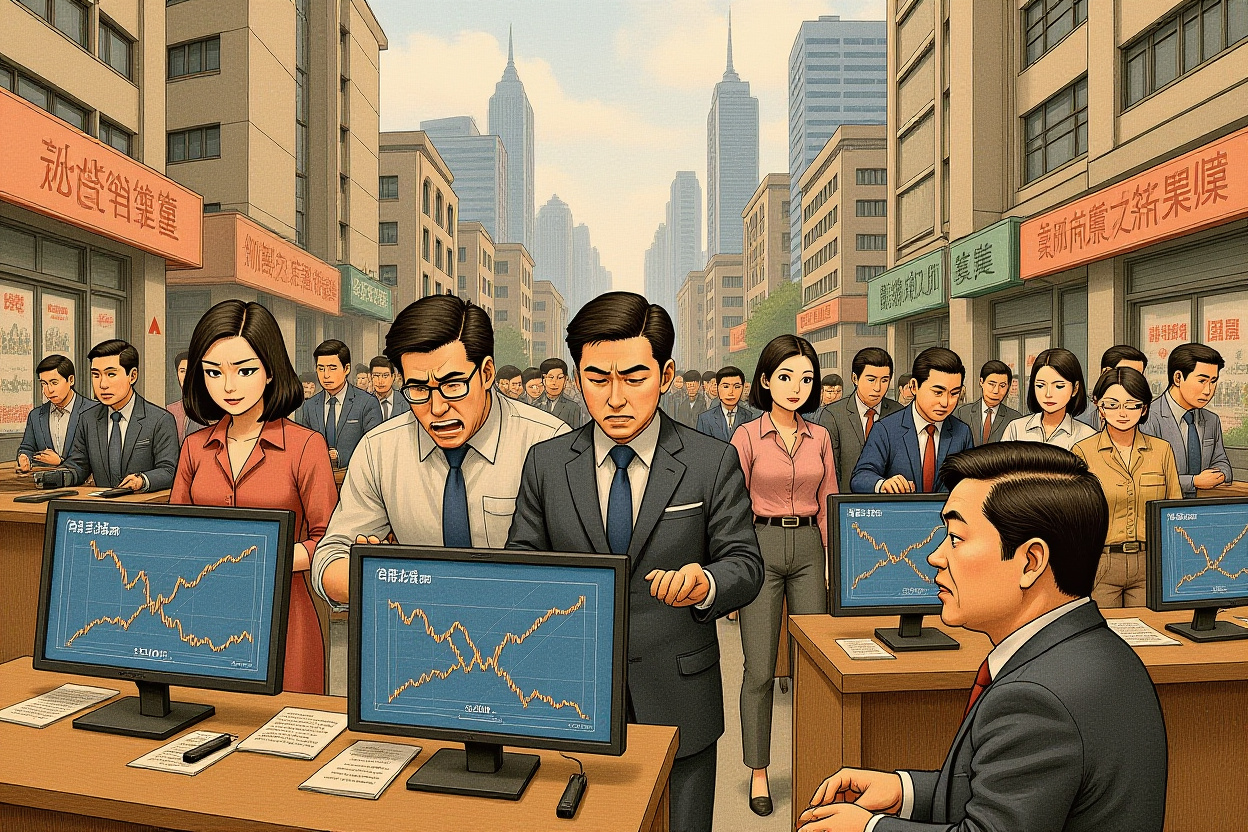Executive Summary
Guangzhou’s property market crisis reflects deeper economic challenges facing China’s traditional manufacturing hub. Despite aggressive policy support, the city continues to underperform compared to other first-tier cities, with particular weakness in its critical automotive sector.
- Guangzhou’s average secondary home prices dropped to 22,700 yuan per square meter in August, falling below the 23,000 yuan threshold for the first time in years
- The city’s automotive industry, representing 25.3% of industrial output, continues to struggle with production down 20% in 2024
- Despite being the first first-tier city to completely remove purchase restrictions, Guangzhou’s property market has failed to respond positively
- Export growth of 15.5% in first half 2025 provides some offsetting positive momentum through electric vehicles and cosmetics exports
- Inventory overhang remains severe with new home destocking periods reaching 21.1 months, far exceeding the 12-month safety threshold
Market Reality: Guangzhou Property Prices Hit Critical Support Level
The Guangzhou property market has reached a pivotal moment as average prices decline below the psychologically important 23,000 yuan per square meter level. This deterioration comes despite the city implementing the most aggressive support measures among China’s first-tier cities.
Price Performance Versus Other First-Tier Cities
While Beijing, Shanghai, and Shenzhen experienced temporary rebounds following policy easing measures, Guangzhou’s property market has consistently declined. According to National Bureau of Statistics (国家统计局) data, Guangzhou is the only first-tier city where both new and secondary home prices have failed to show any sustained recovery since the September 2024 easing cycle began.
The average transaction price for secondary homes dropped to 2.31 million yuan per unit in August, hitting a five-year low. This represents a significant correction from peak levels and reflects diminishing buyer confidence in China’s southern economic hub.
Policy Context: Most Aggressive Measures, Weakest Results
Guangzhou’s property market policy approach has been notably more aggressive than other first-tier cities. The city completely eliminated purchase restrictions across all districts in 2024, becoming the first first-tier city to align with second-tier city policies.
Comprehensive Deregulation Approach
The municipality removed all purchase restrictions in peripheral districts including Huadu (花都), Zengcheng (增城), and Conghua (从化), as well as in core districts such as Tianhe (天河), Yuexiu (越秀), and Haizhu (海珠). Additionally, the city eliminated resale restrictions and price controls, effectively ending 15 years of property market regulation according to National Business Daily (每日经济新闻) reporting.
Despite these measures, the Guangzhou property market continues to underperform. Mortgage rates in Guangzhou are now the lowest among first-tier cities, matching levels typically seen in second-tier markets, yet buyer response remains tepid.
Economic Underpinnings: Automotive Sector Struggles Weigh on Market
The weakness in Guangzhou’s property market closely correlates with challenges in its industrial base, particularly the automotive sector which accounts for 25.3% of the city’s industrial output.
Automotive Industry Contraction
Guangzhou’s automotive manufacturing value-added declined by 18.2% in 2024, reflecting what local authorities describe as a “deep adjustment period during kinetic energy transformation.” Production fell 20% to 2.54 million vehicles, a significant setback for the city that previously led national automotive production with 3.18 million vehicles in 2023.
The challenges stem from multiple factors: traditional capacity oversupply heavy reliance on domestic markets, limited scale in new energy vehicle production, insufficient brand premiumization, and intensified global competition. Unlike Shanghai and Chongqing, which rapidly embraced new energy vehicle production, Guangzhou’s automakers, particularly joint ventures with Japanese manufacturers, were slower to transition.
Market Indicators: Current Guangzhou Property Market Conditions
Multiple data points confirm the ongoing deterioration in Guangzhou’s real estate market conditions across various metrics.
Transaction Volume and Pricing Dynamics
Secondary home transactions fell to 8,730 units in August, with 62% of transactions below 2 million yuan and 88% below 4 million yuan. This represents a notable downshift in market activity and price points compared to historical norms.
According to Beike Zhaofang (贝壳找房) data, 94.04% of price-adjusted listings in August were reductions, indicating overwhelming downward pressure on prices. Buyer sentiment remains weak, with property viewings declining 11.8% month-over-month according to Guangzhou Centaline Property (广州中原地产) data.
Inventory Overhang and Destocking Challenges
New home inventory remains elevated with a destocking period of 21.1 months, significantly exceeding the 12-month safety threshold established by the Ministry of Natural Resources (自然资源部) and Ministry of Housing and Urban-Rural Development (住房和城乡建设部).
District-level data reveals even more severe situations: Huangpu (黄埔) and Nansha (南沙) districts face destocking periods exceeding 30 months, while Yuexiu district struggles with a 62.1-month inventory clearance timeline despite relatively limited new supply.
Offsetting Positives: Export Growth Provides Economic Buffer
While the property market and automotive sector struggle, Guangzhou’s export performance has shown remarkable strength, growing 15.5% year-over-year in the first half of 2025 to reach 605.05 billion yuan.
Export Composition and Drivers
The export surge has been driven by multiple factors: competitive advantages in specific sectors, rapid development of cross-border e-commerce, strong private enterprise performance, and temporary factors including preemptive shipping to the United States.
Notably, exports of electric vehicles, lithium batteries, and solar products—the “new three” products—grew 30.8%. Automotive exports increased 28.4% to 90,000 vehicles, with domestic brands accounting for 63.9% of exports and growing 27.6%.
Guangzhou’s cosmetics industry also contributed significantly to export growth with a 49.9% increase, benefiting from global expansion of local brands such as Miniso (名创优品) and emerging market demand growth.
Private Enterprise Leadership
Private companies have emerged as export leaders, accounting for 60.4% of Guangzhou’s total foreign trade value at 365.35 billion yuan, growing 27.9% year-over-year. The number of private enterprises increased 11.3% to 19,700, with particularly strong performance in high-technology products exceeding 55% of exports.
Investment Implications and Market Outlook
The Guangzhou property market faces continued headwinds despite policy support, with economic diversification efforts likely requiring additional time to yield results.
Near-Term Market Expectations
Given the inventory overhang and weak buyer sentiment, price pressures are likely to persist in the near term. The concentration of transactions at lower price points suggests market normalization toward more affordable housing levels rather than a temporary correction.
Investors should monitor automotive sector restructuring progress, particularly Guangzhou Automobile Group’s (广汽集团) collaboration with Huawei, which could signal improved competitiveness in new energy vehicle segments.
Longer-Term Structural Considerations
Guangzhou’s economic transformation will likely determine property market recovery timing. The export sector’s strong performance provides a foundation for economic stabilization, but rebalancing from property dependence requires continued industrial upgrading.
Historical precedent suggests Guangzhou’s innovation capacity and entrepreneurial spirit—evident in its millennium of commercial history—provide underlying strengths that could support eventual recovery. However, investors should anticipate extended adjustment periods given current market fundamentals.
Strategic Considerations for Market Participants
Market conditions in Guangzhou present both challenges and opportunities for different participant categories, requiring tailored approaches based on investment horizons and risk tolerance.
For Domestic and International Investors
The current market dislocation may create entry opportunities for long-term investors, particularly in commercial properties and logistics assets benefiting from export growth. Residential market recovery likely awaits broader economic stabilization, suggesting phased investment approaches may be appropriate.
Investors should closely monitor policy developments, particularly potential targeted measures to address district-specific inventory challenges without reinstituting broader market restrictions that could dampen transaction activity.
For Corporate Executives and Business planners
The property market correction reduces occupancy costs for businesses considering Guangzhou expansion, potentially improving competitiveness against other first-tier cities. The export growth trajectory suggests particular opportunities in e-commerce, logistics, and advanced manufacturing sectors benefiting from trade growth.
Human resource considerations should account for improved housing affordability for relocated employees, potentially reducing compensation pressures compared to other first-tier cities where housing costs remain elevated.
Path Forward: Monitoring Key Recovery Indicators
Market participants should track several indicators to gauge Guangzhou property market recovery timing and trajectory, including automotive production data, export performance, and inventory destocking progress.
The Guangzhou property market likely requires broader economic stabilization before sustained recovery can emerge. Current export strength provides a partial offset, but comprehensive recovery awaits automotive sector restructuring and improved consumer confidence.
Historical resilience suggests Guangzhou will eventually overcome current challenges, but the transition period requires careful navigation by investors, businesses, and policymakers alike. Market participants should maintain flexibility while monitoring for signs of stabilization in key economic indicators.




